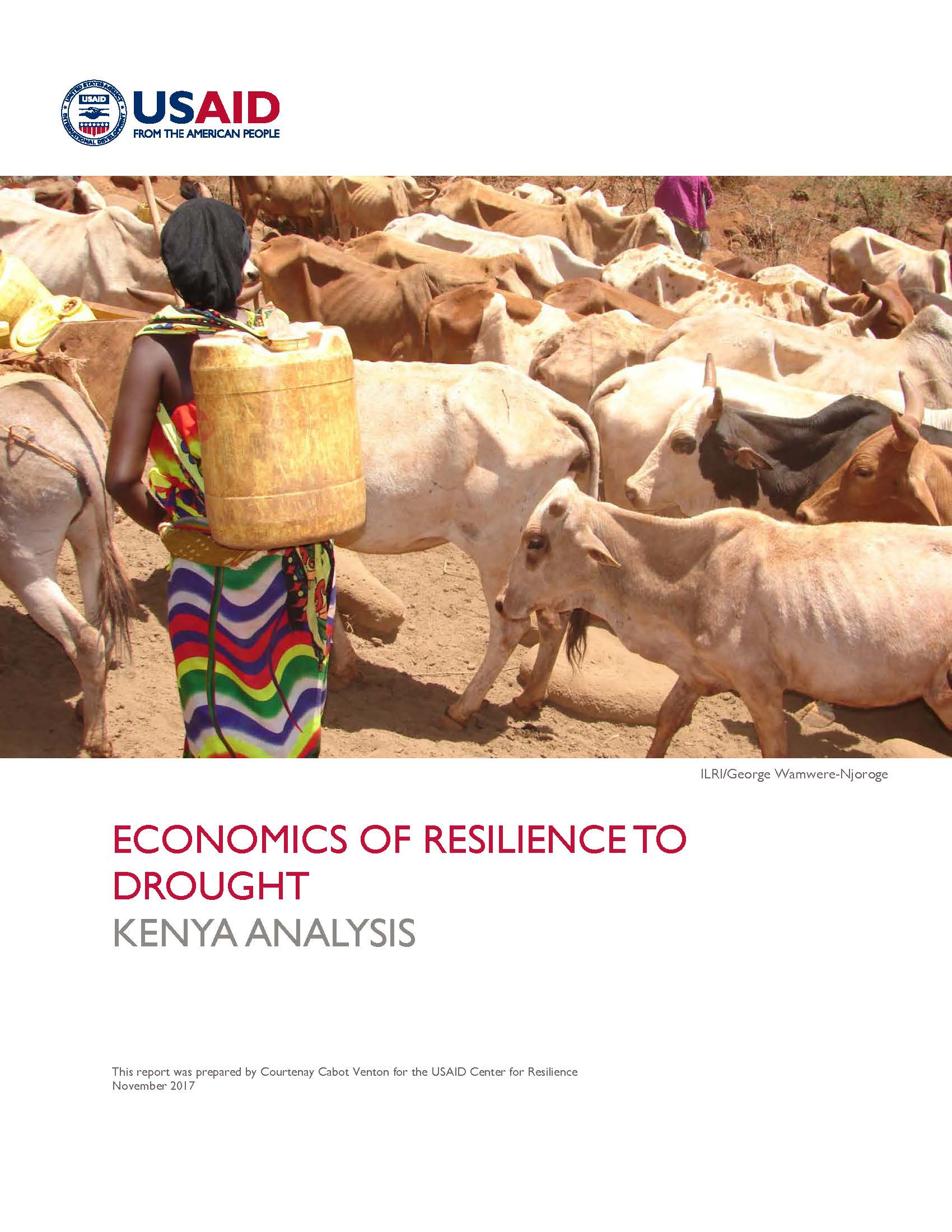Home » Economics of Resilience to Drought: Kenya Analysis
Speeches Shim
A recent study commissioned by USAID demonstrates that investing in a more proactive response to avert humanitarian crises could reduce the cost to international donors by 30%, whilst also protecting billions of dollars of income and assets for those most affected.
The aim of this study is to investigate the impact of an early humanitarian response and resilience building on humanitarian outcomes in Turkana and Northeast Kenya, both in terms of cost savings, as well as the avoided losses that can result from a more proactive response. The study investigates existing data and empirical evidence, and uses this to model potential impacts using the Household Economy Approach (HEA).
Annex A and Annex B are available for download here
Key Findings:
- An early humanitarian response would save an estimated US$381 million on cost of humanitarian response alone over a 15-year period. When avoided income and livestock losses are incorporated, an early humanitarian response could save US$782 million, or an average of US$52 million per year.
- Safety net programming at a transfer level of US$300 per household reduces the net cost of humanitarian response, saving an estimated US$181 million over 15 years over the cost of a late response. When this figure is adjusted to account for the benefits of the transfer beyond filling the food deficit, a safety net scenario saves US$433m over the cost of a late response. When avoided losses are incorporated, a safety net transfer could save US$962 million, or an average of US$64 million per year.
- A resilience building scenario that results in an increase in income of US$450 per household reduces the net cost of humanitarian response by an estimated US$273 million over 15 years over the cost of a late response. When this figure is adjusted to account for the benefits of the transfer beyond filling the food deficit, a resilience scenario saves US$693 million over the cost of a late response. When avoided losses are incorporated, resilience building could save US$1.3 billion, or an average of US$84 million per year.
- Investing in early response and resilience measures yields benefits of $2.8 for every $1 invested.
- When these estimates are applied to total U.S. Government (USG) spending on emergency food aid in Kenya, the USG could have saved US$259 million over 15 years in direct cost savings, or 26% of the total cost of emergency aid. Incorporating the avoided losses to households, the model estimates net savings of US$1.2 billion.
Date
Monday, December 18, 2017 - 2:00pm


Comment
Make a general inquiry or suggest an improvement.